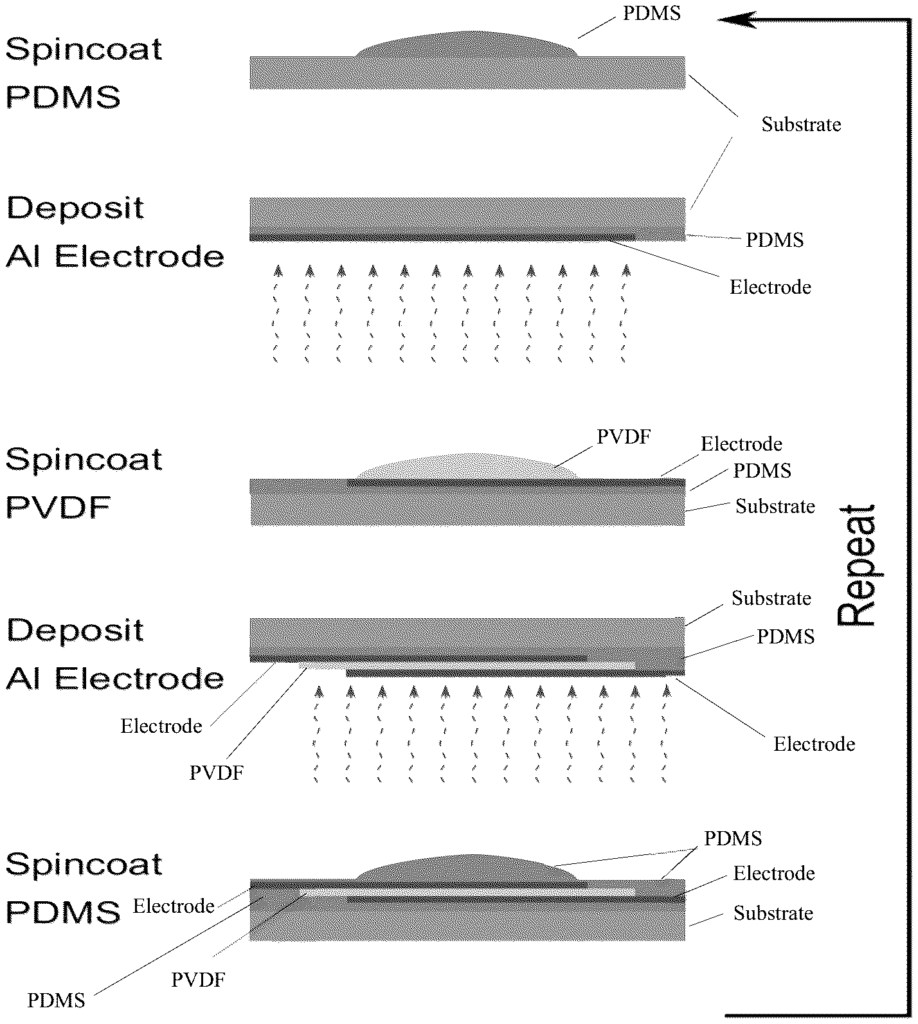Empower Devices with Flexible Energy Solutions
Introduction
As industries move toward greater efficiency, sustainability, and portability, the demand for advanced energy solutions has never been higher. Devices are becoming smaller, more flexible, and more integrated into daily life—whether they’re powering the latest wearable technology or providing renewable energy for remote devices. Our patented method for manufacturing flexible piezoelectric film-based power sources offers a transformative approach to energy generation, storage, and usage. Whether you’re developing next-gen wearables or seeking a sustainable, lightweight power solution, this innovation can take your products to the next level.
Challenges in Powering Flexible, Portable Devices
Powering small, portable, and flexible devices presents unique challenges. Traditional batteries are often bulky, rigid, and require frequent charging, limiting the potential of wearables and other flexible technologies. For industries focused on wearable technology, portable electronics, and renewable energy applications, the need for efficient, flexible power sources is growing rapidly. Without a flexible, scalable solution, these industries face barriers to innovation, hindering the development of next-gen products.
Why Choose Flexible Energy Solutions?
Our patented flexible piezoelectric film-based power source provides the ideal solution for industries seeking advanced energy capabilities. This innovative technology converts mechanical energy into electrical energy through flexible, lightweight films, offering a highly adaptable, sustainable power source. It is perfect for wearables, portable electronics, and remote energy applications where traditional batteries are not practical.
The piezoelectric nature of this technology allows it to harvest energy from motion, making it ideal for wearables and devices that need to generate power from movement. Whether integrated into clothing, sports equipment, or small electronics, this film-based power source delivers the energy needed while maintaining flexibility and durability. Additionally, the manufacturing process is scalable, enabling cost-effective production for large-scale adoption across multiple industries.
Key Benefits
- Flexible Power Generation: Offers adaptable, piezoelectric energy for a wide range of devices.
- Sustainable: Harvests energy from motion, reducing reliance on traditional batteries.
- Lightweight and Durable: Perfect for wearables, portable electronics, and remote sensors.
- Cost-Effective Manufacturing: Scalable technology designed for mass production.
Lead with Flexible Energy Solutions
Licensing this innovative piezoelectric film-based power source allows companies to embrace the future of portable energy. From wearables to renewable energy devices, this technology offers a sustainable, flexible solution that drives performance, efficiency, and adaptability across industries. Empower your products with a power source that keeps up with your innovative goals.

- Abstract
- Claims
The invention claimed is:
Share
Title
Manufacturing of a flexible piezoelectric film-based power source
Inventor(s)
Birol OZTURK, Peker Milas
Assignee(s)
Morgan State University
Patent #
11990851
Patent Date
May 21, 2024
